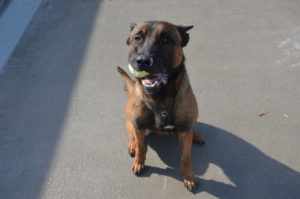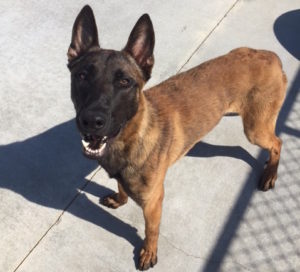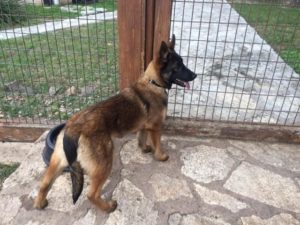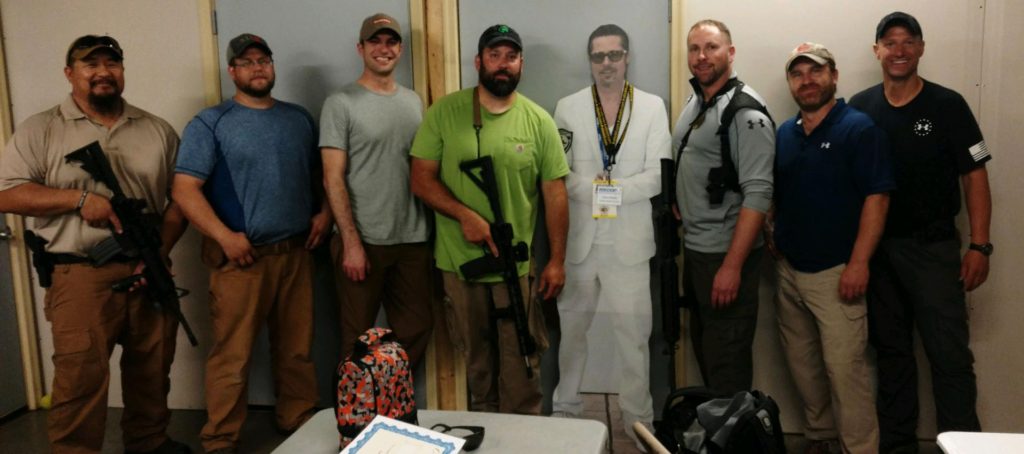Tracking a suspect using your k9 is an art form for the handler. Too many handlers, though, rely on their canine too much during the track. Most times I see handlers problem solve tracking, they are trying to fix issues that are hereditary in the canine, or trying to fix issues in the dog, when in reality it is the handler’s issues that should be addressed.
For example: During the track the canine seems to be trying to find the track. i.e. nose to the ground or air scenting. Either way the canine is searching, then the handler uses a verbal command to “search” because canine hasn’t picked the direction.
“Sometimes it’s best for the handler to not say anything at all, read the situation and let his canine work”
It is just as important during tracking that handlers understand why the k9 operates the way he does during the track, as it is to understand how to problem solve throughout the track.
A handler’s role is to ensure that the cards are making sense. But this method requires a happy medium of skill from the handler and from the canine. The end state will be that once mastered the record for real world, successful tracks will rise.
Wind Speed: I feel wind speed is one of the most significant factors in tracking because if your canine misses a turn, the wind speed dictates how far you will go past the turn. The higher the wind speed, the further the wind is pushing the odor. Track set time does play a role in this case as well, i.e. the longer the odor sits, the more time it has to disperse. Longer the set time, the further wind is pushed at a turn, the further the k9 pushes and before you know it, a k9 team could be 25 yards past. In a urban environment that could mean a lost track.
Wind Direction: Naturally, canines pick up their head and try to play the wind. I know some handlers who stop their canine because they only proceed forward until the canine puts his nose to the ground. I notice handlers do this only when they know where the track is, but when it came to real world tracks, they are lost because the handlers assist their canine and have formed the habit of k9 relying on handler.
Track Speed: This is key because a handler can push his canine past any turn if the handler is running too fast. A fast pace by handler also communicates to your canine that you are committed. If your canine gets a feeling of commitment by handler he will keep tracking even if there is no track.
“Runs down leash, if you run the canine will run, faster you work the faster your canines work then it becomes sloppy”
Speed typically isn’t your security during tracking, and you should never run to a gun fight, so slow down or you will mis your canine’s change of behavior. Remember: to slow will also fluctuate the canine as well.
Surfaces: Odor on concrete doesn’t set very well, so you can see how difficult it can be for dogs. In training, I see that track layers will walk on the cracks or spread grass on concrete to help the dog. Which is fine for the beginning stage, but practical for the real world? No.
I also see track layers just walk across the road over concrete just to get to the other side. Doing so will set a habit to your canine that it’s SOP to just cross the street.
Weather: I feel other than wind, weather plays no factor affecting the canine during tracking. Meaning heat compared to cold, unless extreme. Bring the rain.
Define – Change of behavior is a rapid variation in action. Examples of a change of behavior are as follows: head turn/snap, appears to be sniffing air/ground in a chaotic manner without committing to direction, and even a simple change of direction of movement. It is very important that you know your dog’s change of behavior in tracking. It could be .1 second or last 5 seconds depending on how independent your canine is because if you missed it and you push on, the track is lost.
“Chasing dreams” Is a term I use when the handler pushes the canine off the track either because he missed the change of behavior, or because he feels the suspect went in a different direction. Either way they are lost “chasing dreams”.
Next month’s newsletter I will quarterback a track on video and explain in detail these points of performance.
Tip of the Month (Morton Method): There are more pros than cons to teach your canine to hit low i.e. leg. If officers have to engage suspect while canine is en route or if canine is engaging at least canine has better chance of survival from a blue on blue. Also, if it’s your department SOP to cuff suspect before canine is release from bite, yet officers seem to be fighting the k9 to get control of arm. Emphasizing leg bites also minimizes the suspect to jute your k9, as your k9 launches up toward arm the suspect could turn direction and your k9 misses bite. I’m not teaching leg bites only, but I do want the k9 to have a low site picture.
CANINE TACTICAL OF IOWA NEWS UPDATE
- GEAR: CUSTOM BALLISTIC VEST DESIGNED AND MANUFACTURED BY CANINE TACTICAL HAS UPDATED TO REMOVEABLE BALLISTIC PANELS AS WELL AS ADDED A FIXED RED/WHITE LIGHT MOUNT. Website will be updated soon at http://www.caninetactical.com/ballistic-vest.php
- CANINE TACTICAL SEMINAR: VENTOSA KENNELS HOSTING TACTICAL TRACKING /HIP LEAD (MORTON METHOD) SEMINAR 12JUNE – 16JUNE 2017 http://www.ventosakennelnc.com/courses-seminars/seminars/tactical-tracking-seminar/
- CANINE TACTICAL SEMINAR: BELCHERTOWN PD IN MASSACHUSETTS IS HOSTING CTAC COURSES AND A 3 DAY K9 HANDLER SEMINAR ON DATES: CTAC – 19TH AND 20TH DAYS OF JUNE, 22ND AND 23RD DAYS OF JUNE AND THE 3 DAY K9 MORTON METHOD SEMINAR IS THE 26TH – 28TH DAYS OF JUNE. CONTACT ADAM BROUGHAM FOR DETAILED INFORMATION: ABrougham@belchertown.org
- LOOK FOR CANINE TACTICAL’S “BOOTH” AND AS AN INSTRUCTOR AT HITS IN SAN FRANCISCO AUGUTST 28TH – 30TH 2017, LECTURE DATES: 29TH AND 30TH AND TIMES ARE 10:15 A.M. – 12:15 A.M. BOTH DAYS.
- LATEST CANINES ON DECK FOR JULY’S 5 WEEK COURSE:
CANINE BOY CANINE TASER
- CANINE RECENTLY DELIEVERED FOR THE PETS FOR VETS PROGRAM:
CANINE DORIS CANINE ROOK
- LATEST CTAC LEVEL 1 GRADUATES:





